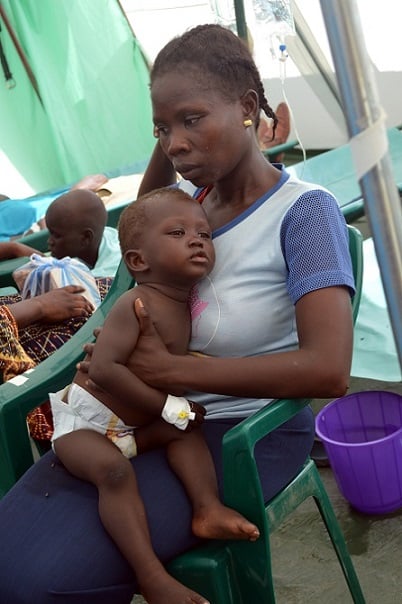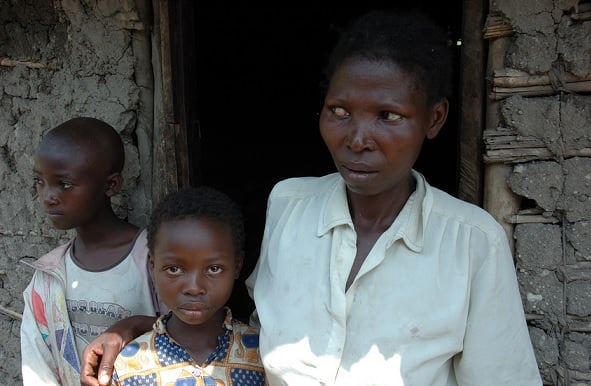Women, Peace & Security
Source: Mamamia.com
Nava Malula knows what it is to be a woman in a war zone. As a survivor of the civil war in the Democratic Republic of the Congo, she describes her memories of brutal violence against civilians as a wound that won't stop bleeding.
"The women, they became like toys. They didn't have any choice," she says.
"My sister's daughter, she's 16 and has five children because of rapes, without a husband. Imagine," she says. With her father, sister and two brothers killed in the conflict, Ms Malula escaped to Kakuma Refugee Camp in Kenya in 1999.
"There were no men. Far more women, alone with the children," she says.
Astonishingly, Ms Malula's story is not uncommon. Women have always experienced war differently to men, with opportunistic rapes and pillages by armed forces dating back to Ancient Greek and Roman times.
But now, as the technologies of war changes and conflicts are increasingly fought between a complex web of paramilitary units, local warlords and police forces, some experts say women are more vulnerable in conflict than ever.

"Tragically, it is absolutely true to say that the brunt of modern-day armed conflicts is borne by civilians," Australian Red Cross International Humanitarian Law (IHL) Pip Ross says.
"Women face vastly heightened risk of various horrific types of sexual violence in armed conflict, including where sexual violence such as forced pregnancy and sexual slavery is used deliberately as a weapon of war or a tool of genocide," Ms Ross says.
Perhaps, most easily remembered, women were targeted as bearers of ethnic identity in the 'rape camps' of 1990s Bosnia and in the 1994 Rwandan genocide.
More recently, gruesome sexual violence has characterised the conflicts in Syria, Nigeria, Egypt, Cote d'Ivoire, Myanmar, Mali, South Sudan and Sudan.
London School of Economics academic Mary Kaldor agrees that civilians are more often targeted than combatants today, and links this phenomenon to the changed strategic aim of modern wars.
"The new warfare tends to avoid battle and to control territory through political control of the population," Ms Kaldor writes in her 2013 book New and Old Wars.
"This often involves population expulsion through various means such as mass killing and forcible resettlement, (which) is why all these wars are characterised by high levels of refugees and displaced persons, and why most violence is directed against civilians," she says.
Indeed, women and children make up the vast majority of the refugees and displaced persons produced by armed conflict today – and in that context, they face further risks of sexual exploitation by authorities, forced marriage and marginalisation related to their lowered status in patriarchal systems.
"(W)omen are particularly susceptible to poverty and the suffering engendered by armed conflict, especially if they were already victims of discrimination in peacetime," ICRC Women and War advisor Sophie Graven Minnig says.
Widows and women heads of household are at particular risk in these refugee camp or post-conflict settings, she says. Attacks on civilians are prohibited by IHL, the core of which is found in the Geneva Conventions and Additional Protocols.
But despite this – and despite a slew of United Nations Security Council resolutions addressing the protection of women and other civilians in armed conflict – experts say enforcement of these laws remains a problem.
"Rape and other forms of sexual violence that amount to serious violations of international humanitarian law entail individual criminal responsibility and must be prosecuted," ICRC Legal Department Geneva Gloria Gaggioli says.
"The suffering women endure in situations of armed conflict is mainly not the result of a lack of rules protecting them but is rather due to a lack of respect for these rules," Ms Gaggioli says.
Exactly how respect for these rules can be promoted, though, remains unclear.
Executive Director of the Australian Civil-Military Centre Dr Alan Ryan says gender training for peacekeepers is "absolutely essential".
"Even now more males will die in the conflict generally, but in the aftermath of conflict women and children will die at a far greater rate," Dr Ryan says.
"So when you deploy troops to provide security and establish the preconditions for the reestablishment of governments, if you don't come with a gender perspective, you're not going to be in a position to deal with the most dramatically affected parts of the population," he says.
Ms Ross points to other priorities such as supporting women to adopt new, more positive and active roles in conflict.
"Increasing women's participation is key to ensuring that their needs are adequately met in post-conflict power structures," she says.
"(W)e need to really look hard at how women and men experience armed conflict, rather than just viewing men as active and women as victims, and allocating resources and time accordingly."
Ms Malula is one woman who has refused to suffer as a passive victim.
Asked if she believes women have a key role to play in empowering civilians and rebuilding communities after war, "I am an example," she says.
"Sometimes when I think about the violence, the bad sexual violence, it motivates me to do something good, to do the advocacy," she says.
She founded the Swahili Speaking Women Advocacy Service shortly after moving to Australia and is now a board member at Australian National Committee on Refugee Women.
She also recently returned to the Democratic Republic of the Congo to provide training on sexual violence to women.
It's a courageous approach to addressing the needs of women in war and Ms Malula says that's exactly what is needed.
"I want to empower them to stand up," she says.
"Advocates can't be afraid. You want to give people their rights, you want to speak on behalf of people? You cannot be afraid."

